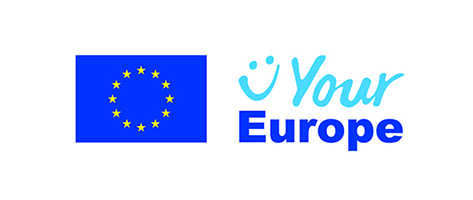Last updated on 9 December 2020
If you want to obtain a qualification in one of the Italian institutions offering tertiary education, you will need to follow the following stages:
- identify a bachelor’s degree, master's degree or any other course of study of interest to you by browsing the Universitaly site and/or directly the websites of the various universities, higher training institutions for art, music and dance (AFAM), higher technical training institutes (ITS) or higher linguistic mediation institutes (SSML)
- check whether you are eligible for the course of study you are interested in
- check which documents or information you need for the application
- prepare the documentation
- start one or more applications for admission, generally on your chosen tertiary education site, according to your chosen course of study. For certain courses, e.g. in the medical field, you will need to register first on theUniversitalywebsite
- attach the documentation to an online form, in the formats indicated (e.g. pdf)
- pay administrative costs, where required
- send the application
If you are unable to complete and submit your application online, check your chosen institution’s website for alternative ways to submit your application.
- wait for confirmation that your application has been correctly received.
In some cases, you will also have to take anadmission and/or language test and/or a practical on-site or video call test(e.g. design, if you want to do art studies).
- Login details, identification, and signature required by the procedure
For most courses, you will generally need to register on the website of the university, academy or other tertiary education institution in order to be able to submit your application for admission.
However, you will have to register on theUniversitalyportal if you want to try to access a course with an admission test, via a national competition:
-
- Bachelor's and master’s degree courses directly aimed at architectural training
- Master’s degree in Medicine and Surgery
- Master’s degree in Dentistry and Dental Prosthetics
- Master’s degree in Veterinary Medicine
- Bachelor’s and master’s degree courses in health professions
- Master’s degree in Primary Training Sciences.
During the admission stage, most institutions will ask you to send scans or photos of original signed documents .
- Type and format of documentary evidence
Documents
The list of documents required is available on the Universitaly portal or on the websites of universities, academies and other types of tertiary education institutions, usually in the section for foreign students.
In general, you may be asked for the following documents:
-
- a secondary school diploma
- a certificate of university studies completed abroad
- an examination transcript
- a supplementary diploma
However, we advise you to check on the website of each institution to see whether all or just some of the documents listed above are required.
Academies and all other higher training institutions for art, music and dance (AFAM), and design schools usually also ask for a portfolio to demonstrate your artistic skills.
We advise you to prepare the necessary documentation before starting your application.
You will normally have to provide an official translation of documents if they are not already available in English . Some institutions also accept French and Spanish .
In Italy, an official translation means a translation by a translator recognised by the Ministry of Foreign Affairs or a translator working for the Italian consulate or embassy in the country where you obtained the bachelor’s degree or other qualification.
We advise you to create a CV with Europass , as many institutions require it.
You will need to prove that you know the language of the course you want to follow, i.e. Italian and/or English, by means of a test or a document certifying your level.
- Means of redress or appeal
The appeal procedures are set out on the Universitaly website and on the universities’ websites and refer to the competition notices or rules governing all of them.
- Expected costs and online payment arrangements
You will usually have to pay for your admission application , sometimes before you can send it, sometimes after you know the outcome and/or only if you have been admitted.
Some universities accept payment with PagoPA (insert link), others require payment by postal order or bank transfer.
The cost of the official translation must be checked with the chosen translator or the staff of the consulate/embassy.
- Time limits and estimated timing
You should submit your application in good time, by checking the time limit well in advance on Universitaly, on the websites of tertiary education institutions or by calling the academic offices. We advise you to do this at least one semester in advance.
To be successful, you will have to wait for a variable amount of time, usually indicated on the websites of the institutions or communicated by the offices receiving the applications.
The timing is decided by the universities themselves on the basis of their teaching regulations.
For courses with access procedures via a national competition, certain timetables may be decided at national level by Ministerial Decree (DM) each year.
- Any additional languages in which the procedure can be carried out .
Most of the websites of universities and other institutions have an English section for international students and there is a specific office that facilitates contact with international students, at least in English. Check directly on the website of the chosen university , academy or other institution to see which languages you can use to submit your application for admission. The Universitaly website is in Italian and English.
